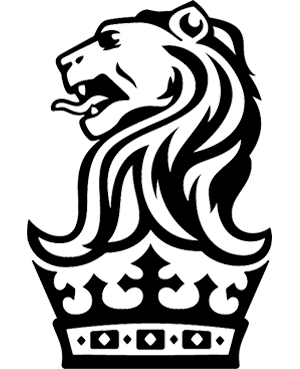Culture
Development
How will you build future leaders? See how brands onboard and develop the skills of their staff through specific training and feedback methodologies.
Network to learn from experts at companies you admire
Instead of trying to synthesize the advice from ten different people on a particular topic, Airbnb co-founder Brian Chesky identifies the one person who is a subject matter expert on a topic and goes directly to that person for advice. Chesky has proactively reached out to:
- The French Laundry to learn about hospitality and how the restaurant treats its customers and presents its cuisine
- Former CIA director George Tenet to learn about culture and how George gets people to feel committed in a place where everyone's a spy
- Zappos to learn about how they developed their culture
- Apple’s Jony Ive to learn about design
- LinkedIn’s Jeff Weiner to learn about the importance of removing underperforming managers
- Disney’s Bob Iger for advice on management
- Facebook's Sheryl Sandberg to talk about international expansion and the importance of empowering women leaders
- eBay's John Donahoe to discuss scaling operations and managing a board
- Salesforce.com's CEO Marc Benioff to learn how to push an executive team
Create time for employees to share their skills
In the spirit of building a sense of community among staff, Airbnb regularly hosts Air Shares. These are opportunities for employees to share their work- or non-work-related skills with other team members across the company. Aisling Hassel, Airbnb's Global Head of Customer Experience, explains, "If you are fantastic at making a crème brûlée, we will organize an Air Share where you can teach others how to make crème brûlées." She continues, "[Air Shares] are immensely popular and allow us to leverage each other's strong qualities."
Ask open-ended questions during teaching moments
Apple managers provide feedback to their staff constantly, both immediately after an interaction with a customer and at the end of every shift. They use open-ended questions starting with 'What' and 'How' and avoid any negative words like 'problem.' This helps employees come to their own realization of how to build better quality relationships with customers.
Some Apple Store examples:
- "What was the experience like? I’d like to know your perspective, and then I’ll tell you what I saw."
- "What did you miss?"
- "How could the transaction have been different?”
Train employees to provide fearless feedback to each other
In the Apple Store training manual, employees are given this example as a way to provide fearless feedback to their colleagues:
- "Hi, fellow Genius. I overheard your conversation with your customer during the last interaction and I have some feedback if you have a moment. Is this a good time?"
- "Yes, this is a good time."
- "You did a great job resolving the customer's iPhone issue. I was concerned with how quickly you spoke to the customer. It seemed like you were rushing through the interaction, and the customer had additional questions."
Do not rush training
Apple Geniuses first go through an intensive two-week training program that includes role-playing exercises at a mock Apple Store and an array of certifications. This is followed by several weeks of shadowing seasoned employees around an Apple Store, where they are only allowed to observe and never interact with customers. This is all to make sure that employees have been fully indoctrinated into the principles outlined in the over 80-page Genius Training Student Workbook, which focuses primarily on empathizing with, consoling, and cheering up customers.
Create opportunities for new employees to connect with people outside of their department
On their first day at Apple, employees don't have anyone there to help them connect their computer to the network. While this forces new recruits to make connections across the organization in order to solve the problem, it is also Apple's (not-so) subtle way of saying: If you're smart enough to work here, you should be smart enough to figure this out yourself.
Now this doesn't mean new employees are completely on their own. Apple designates an iBuddy from outside the new recruit's department to help her get around the building and campus. They usually meet up only once or twice before things get too busy.
Teach mistakes
To Apple, learning about past failures is just as important as past successes. At Apple University, an MBA-like program, courses and lectures are dedicated to:
- Mistakes Apple has made in the past
- Company responses to public relation disasters, like the Tylenol tampering crisis of 1982
- The downfall of companies that once dominated their field, like A&P and Sears
Lectures with lively debates are also given regarding controversial decisions Apple has made in the past, like allowing iPod and iTunes to be compatible with Microsoft's Windows system.
Master the 67 competencies
As part of their yearly development, Apple managers are expected to improve upon at least 2 of the 67 competencies of Lominger's management model outlined in the book, FYI: For Your Improvement. Some competencies include being action-oriented, approachable, and dealing with ambiguity. Apple Stores also carry free copies of the book for staff to read.
Develop business generalists
Chick-fil-A employees are encouraged to move around in the organization between different departments. This gives everyone the opportunity to better understand the business in its entirety, which puts them in a better position to become future company leaders.
The path to becoming a business generalist starts with the leaders of the company who:
- Encourage staff to share ideas across departments. This not only helps leaders find employees with other talents and interests but fosters a culture of innovation.
- Give staff development plans and a budget for education. Staff attend workshops and conferences, buy books, and travel with the SERVE team who teaches leadership skills to other businesses.
- Mentor at least two people per year from outside of their department. Leaders meet with their mentees regularly and even take them on business trips.
Help employees follow their dreams
Want more from your employees? First ask yourself what you can do for them.
At Chick-fil-A, leaders take an active role in helping their employees follow their passion, even if it leads them away from the company. One restaurant owner went so far as to help an aspiring photographer make a business plan, create a website, and find her an apprenticeship.
As Dee Ann Turner, former vice president of talent, wrote: "As a steward of the talent entrusted to us, we receive 100% of our employees' efforts when they know we care about their dreams and desires."
Make the CEO an integral part of the onboarding process
At Chick-fil-A the CEO takes an active role in making new hires feel welcome. While it is common practice for the CEO to sit with new employees at company events, the biggest impact this leader makes is on the employees' first day.
Franchisees and office staff are welcomed with an organizational culture tour lead by the CEO. The day begins with a bus tour to the original restaurant and then to other meaningful locations in Chick-fil-A's history. There are additional stops to meet company vendors and to see firsthand the charitable work the brand supports. The day ends at the CEO's home, where dinner is served.
Turn an employee's excellent work into a lesson for everyone else
After being served a perfectly made sandwich, Jimmy Collins, Chick-fil-A's former president, would take it back into the kitchen and find out who made it. He would then say, loud enough for everyone to hear, "This is a beautiful piece of work," and then explain in great detail what the employee did right and what makes it a perfect sandwich. This was not only a great way for him to publicly praise outstanding work but also teach everyone a lesson in operational excellence.
Create an employee-to-employee learning culture
Rather than relying on academics, consultants, and professional trainers to train their staff, Google has their top performers do it instead. By doing this, "you not only have a teacher who is better than your other salespeople, but also someone who understands the specific context of your company and customers." While this does detract the time your top salesperson has to sell, Google has found that the total number of sales goes up across the team.
Google also has a G2G (Googler-to-Googler) program that allows any employee to hold a teaching seminar on any topic. Topics range from "highly technical (search algorithm design; a seven-week mini-MBA) to the simply entertaining (tightrope walking; fire breathing; history of the bicycle)." In fact, "80% of all tracked trainings" are run through this program.
Nudge your new hires to be proactive
During orientation, Google sets aside 15-min to explain to Nooglers the benefits of being proactive, and provides them with five specific actions to take:
- Ask questions, lots of questions!
- Schedule regular 1:1s with your manager
- Get to know your team
- Actively solicit feedback—don't wait for it!
- Accept the challenge (ie. take risks and don't be afraid to fail...other Googlers will support you).
As an experiment, two weeks after orientation, some Nooglers received a follow-up email reminding them of these five actions. Those who received this nudge were "more likely to ask for feedback, became productive faster, and tended to have a more accurate sense of their own performance than" those who didn't receive the email. Google now sends this reminder to all Nooglers.
Promote by committee
Besides not having final say on who to hire, Google managers are also not allowed to promote any of their staff without committee approval. This allows promotions to be evaluated equally across the company as managers might define their "best people" differently.
Managers can, however, nominate their employees for a promotion, or individuals can nominate themselves. The promotion committee will then review a promo packet that contains:
- Recommendations from colleagues
- Examples of work, and
- Data showing how the impact you have made merits a promotion
These documents are then compared to a set list of pre-determined criteria and an Unbiasing Performance Review Checklist to ensure fairness. The process takes two to three days, and if rejected, the employee can be nominated again in six months.
Give feedback all year round using stop, start, continue
At Netflix, gone are the days of a manager reviewing employees once a year on a scale of 1 to 5. Let's face it, how good can you be at giving feedback if you only do it once a year? Instead, at Netflix, anyone at anytime can provide feedback to anyone else (managers, executives, and colleagues) in the form of start, stop, continue.
It works like this. Each person tells a colleague:
- One thing they should start doing,
- One thing they should stop doing, and;
- One thing they're doing really well and should keep doing.
Generally, each employee provides feedback to thirty to forty people each year. Netflix even holds in-person speed-feedback sessions with groups of 8 to 60 people. They also have feedback dinners once a year where each person receives feedback from everyone else at the table.
Have executives educate new staff
It started with CEO Reed Hastings and Chief Talent Officer Patty McCord sitting in a room with ten new hires at a time reviewing the culture, financials, and strategy of Netflix. They soon developed it into a 'New Employee College' where for one full day each quarter, every executive spends the day with new employees giving them an inside look into the past, present, and future of Netflix.
Make orientation about your purpose and your people
The Ritz-Carlton's two day orientation always begins with top executives personally greeting each new hire. It lets new employees know that the company prioritizes people over paperwork, processes, and rules. Even as they are served lunch, new hires are surprised with favorite snacks that they had mentioned during their interview process.
As Day One begins, it is also a tradition for the President and COO to lead its discussions. Former President Horst Schulze always liked to stress the importance of every person there with these opening remarks:
"Good morning. My name is Horst Schulze. I am president and COO of this organization, and I am very important around here. But so are you! No human being should claim to be superior to the next human being. You are equally as important to this company as I am. Why is that? Because you are going to make a critical contribution here. If I don't show up for work until tomorrow afternoon, few people will notice! But if one of you in housekeeping doesn't show up, the beds won't get made. We won't be able to check in new guests for tomorrow night. The financial hit will be immediate. We will have a disaster on our hands!"
The rest of the orientation is filled with interactive discussions about:
- The company's history, purpose, and Gold Standards
- What it means to be the top 1% of an industry
- The importance of the customer
- What drives the customer experience
- The importance of financial soundness
Managers go through an additional day of orientation where they discuss the importance of respecting their staff, how to facilitate ongoing career discussions, and how to be a mentor.
Don't let anyone start working until after orientation
No one at The Ritz-Carlton can start their actual job until they complete orientation...no exceptions. And since orientation only happens once a month, The Ritz-Carlton has even lost some new recruits because they needed to start a job right away.
Have employees spend 10% of their time in training
When all is said and done, The Ritz-Carlton staff go through roughly 250 hours of training every year. And depending on the needs and learning styles of the staff, training is offered to them in an array of formats, like: one-on-one coaching, mock drills, employee shadowing, online training, classroom training, and week-long seminars.
Leading the internal training curriculum is the Global Learning Center Services team who creates classes that focus on:
- Managing difficult situations
- Understanding the difference between a guest's expressed and unexpressed needs
- Operational certification for specific job duties
- Leadership development
- Using the customer relationship management (CRM) system
- Continuous quality improvement opportunities
- Customer diversity training with even a section focusing on how to interact with service animals
The Ritz-Carlton also has a Leadership Center dedicated to teaching other companies the secrets of The Ritz-Carlton Mystique.
Provide new hires with a learning coach
For the first three weeks of the job, all new hires are teamed up with learning coaches to help train and certify them on their job's core competencies. The coaches are neither the employee's manager or supervisor but share the same title as the new hire. They are, however, high performers who are aspiring to take on a leadership position and have shown themselves to embody the Gold Standards.
Learning coaches are also assigned to employees who have been experiencing problems meeting the Gold Standards and require, what The Ritz-Carlton calls, just-in-time learning.
Follow-up and listen to your new hires on Day 21
After their first three weeks on the job, The Ritz-Carlton holds a six-hour forum for new hires called Day 21. For The Ritz-Carlton this is a pivotal time to: fill in any gaps not covered in training; review the Gold Standards; and identify and resolve any problems that may cause employees to disengage or become toxic to the culture.
By providing a safe space for staff to speak openly, new hires discuss their experiences and provide comments on:
- If they have all the tools they need to achieve success
- The quality of their training coach
- The camaraderie between departments and how it can be improved
- Their preparedness for their role
- The company culture and if what was described during orientation is present in their day-to-day experiences
All information is collected (with specific comments being kept anonymous) and provided to the guidance team at the hotel to take immediate action on. Leadership follows up directly with all new hires to let them know how their issues were resolved.
Re-certify and celebrate your new hires on Day 365
The Ritz-Carlton created Day 365, as a way to revitalize their staff's commitment and passion for the company. A full day event, employees are first re-certified in their roles with a written test, interview, and role-play session (which is all cake walk after over 250 hours of training in the year).
Once re-certified, employees are presented with service pins—a distinguished symbol of being part of The Ritz-Carlton family. They are also treated to a lunch banquet that is attended by everyone who is celebrating a service anniversary that month. The rest of the day is spent sharing stories and reflecting on the time they have had with the company so far.
Increase empathy by putting yourself in another employee's shoes
Southwest builds empathy among staff and accelerates their development by finding ways for employees to understand the job roles of other staff through shared experiences:
- The Cutting Edge Program: Throughout the year, Southwest pilots will work side-by-side with Ramp Agents to learn first hand about what goes on underneath the plane when it's at the gate. Pilots help with unloading bags, dumping lavatories, and fueling the jets.
- Customer Relationship Training: New Customer Relations Representatives go through four weeks of training which includes firsthand experience in all things customer service, like selling tickets, issuing boarding passes, and tagging bags. They also shadow senior Representatives as they take calls and work on the computer for a week before they even can answer a call themselves.
- Walk a Mile in My Shoes: For six months one year, employees and leaders were asked (not required) to come in on their day off and visit a different department or other station and spend six hours "walking in the shoes" of another employee. Over a 6-month period, 75% of employees participated. Read the experience of one Ramp Supervisor.
- A Day in the Field: This experience is practiced all year long, and is specifically for Officers and Directors to spend several hours and sometimes days working alongside staff to better understand their roles and to say that they can truly "walk the talk."
Set clear standards for service excellence
On their first day, each Starbucks partner (employee) is given a little 'Green Apron' book that fits neatly into their apron pocket. The book outlines the Five Ways of Being. which is the framework that the Starbucks Experience is built upon.
- Be Welcoming: Offer everyone a sense of belonging.
It's not just about writing a person's name on a cup. It's about taking the time to know their name, needs, and preferences when they walk in the door. As a study aid, some partners even keep spreadsheets containing customer preferences. - Be Genuine: Connect, discover, respond.
Connect with customers, so they know they are not just a "wallet with a human attached." If they are visibly having a bad day, try to make it better. Discover their wants and desires by asking questions that require more than a 'yes' or 'no' answer and listening to their response. You might just learn about needs that they didn't know they had. Finally, respond with respect and attention no matter who they are. - Be Considerate: Take care of yourself, each other, and the environment.
Don't just think of the now but be mindful of the future well-being of everyone and everything. It's not just about short-term gain but rather long-term survival and prosperity. - Be Knowledgeable: Love what you do. Share it with others.
"Sharing knowledge with customers makes for more sophisticated consumers." They in turn begin to understand, appreciate, and explore the subtle nuances of what you have to offer. - Be Involved: Connect with one another, with the company, and with your community.
Look around to see how to make things better, and then act on it. Partners have hosted open-mic nights, provided free-training to the unemployed, and even taken sign language lessons, so they can communicate with their customers.
Become the undisputed authority
To be a coffee authority at Starbucks requires extensive training through the 'Coffee Passport' program.
The program begins with each employee receiving a dense Coffee Passport Tasting Guide (PDF) that contains everything you ever need to know about coffee. After studying each Starbucks product in the book, partners join a group tasting. They are encouraged to write notes in their passport like "earthy and herbal" or "full-bodied and smooth." A completed entry earns them a stamp or a sticker in their passport.
Baristas have 90 days to complete the entire book and then have the option to become 'Coffee Masters' and don the coveted black apron. This can take an additional three months of training and requires baristas to ace content-based tests and lead multiple coffee tastings.
Use real-life scenarios when training
To reinforce the Starbucks Five Ways of Being (the guiding principles of the Starbucks Experience), Starbucks uses two types of training exercises to help their employees anticipate customer needs and to help build their confidence and team camaraderie.
'Conversations and Connections'
Each week, a lesson will focus on one particular Way of Being. Partners are given a customer comment card and must evaluate and discuss how the barista made a positive impact on the customer's experience.
Role playing
Both baristas and managers review customer comment cards and are then asked to reflect on the experience. They are asked to answer questions like:
- Name three behaviors that detracted from or enhanced the service.
- Which Green Apron Book behaviors could have made this situation a more positive experience for the customer?
- How would you act or coach the partner in this situation?
Make training into a game...literally
The 'Starbucks Experience from the Inside Out' game can be best described as 'Dungeons and Dragons' meets your neighborhood coffee shop. It is all about challenging partners to anticipate needs, recognize non-verbal cues, empathize, and have some fun.
- Objective
Secure a human connection with a customer. - Components
Dice and game cards. - Set up
In each round, one player plays the part of the barista, another plays the customer. The customer roles the dice to determine what's happening in the store, such as the length of the line and time of day. - Role play
The customer draws a card that explains their visual cues to act out and the internal experience of what they are feeling. They then role play with the barista using body language and words but without actually saying what is written on the card. The barista tries to make a connection with the customer using the principles from their training book, the Green Apron Book. Anyone not participating in this round, provides feedback on how the barista embodies the Starbucks Experience. - Winning the round
The customer decides whether or not the barista successfully made a human connection and delivered a memorable experience.
Have leaders teach
At Umpqua Bank, executives, managers, and officers regularly teach in training and development programs for staff, as well as at their Student Board of Directors program. By placing leaders into a teaching role where they have to explain their job and responsibilities to someone else, it helps them to:
- Organize their thoughts and gain perspective on their role
- See their roles in a different way
- Get up to speed in their area of expertise
Don't rush the onboarding process
Former CEO Ray Davis originally had The Ritz-Carlton lead Umpqua Bank's onboarding process. This highly intensive multi-week onboarding curriculum focused on educating new employees on the bank's history, service standards, policies, benefits, and retail culture.
As Umpqua Bank grew, they developed their own training facility, the World's Greatest Bank University. Expanding beyond orientation, Umpqua created personal growth and development classes like professional presentation appearance, communication skills, and time management.
Require all new hires to go through the same training and then offer them money to quit
Zappos believes that onboarding is a fundamental experience that forges interdepartmental relationships around a common experience. That is why everyone hired at Zappos, from software engineers to executives, goes through the same onboarding process that the call center team goes through.
This 4-week development course covers the Zappos history, vision, philosophy, and culture. It also includes 2 weeks of answering customer phone calls.
Once training is complete, each new employee is offered $4,000 to quit. This final test is to ensure that everyone is there for the right reasons and not just for a paycheck. This offer is good for up until 3 weeks after new hires start their official jobs, with only about 2% of them taking the offer.
Determine pay based on badges
At Zappos, when employees develop a new skill set, they earn a badge. If they earn a new badge, they receive an increase in pay.
It sounds easy but to develop a new skillset and earn a badge takes time and a lot of work. Employees need to take required courses, shadow other employees, read additional materials, and obtain required certifications, if necessary. This is on top of contributing to the Zappos culture and corporate social responsibility functions. All of these steps are clearly mapped out in each employee's progression plans.
Additionally, if employees are interested in different divisions of the company, they can earn badges for those areas as well. Earning those badges gives employees an opportunity to change their jobs completely.
Whether it sounds easy or not, Zappos envisions all employees having the ability to reach senior leadership status within five to seven years at the company. But they are also just as happy if you want to stay exactly the way you are.
Give smaller incremental promotions but more frequently
The thrill and excitement of a promotion only lasts so long. Even lottery winners will return to their happiness baseline within one year of receiving their fortune. Originally, Zappos would promote deserving employees after 18 months, but changed the practice to promoting deserving employees every six months but in smaller increments. These smaller but more frequent pleasures keeps their employees happy longer.
Learn and grow through 'shadow' sessions
To help employees better understand the ins and outs of the business, any Zapponian can schedule a several hour shadow session with another employee from a different department. Zappos has found this to be a great way to build relationships across departments while also helping employees learn and pursue new career paths at the company.
Review and grade phone calls with employees frequently
At least once a month, a customer loyalty team leader will pull a list of recent calls and have a team member choose which recordings to review. The calls are then graded on a 100-point scale using the Happiness Experience Form which breaks down a call into several parts:
- Greeting: Did the team member introduce himself by name, use the Zappos tone of voice, and genuinely offer help?
- Personal emotional connection: Was the team member helpful, patient, and sincere? Did he try to engage in conversation with the customer at least twice? And, did he keep the rapport going after the customer responded to his attempts?
- Service: Did the team member provide multiple solutions to the customer's need? How well was the customer need satisfied and did she have an opportunity to address any unstated needs?
- Seeking and supplying information: Did the team member provide the correct information and solution to the customer?
- Conclusion: Was the full order reviewed? Did the team member make an effort to WOW the customer with any perks? Did she invite the customer into an ongoing relationship with Zappos?
Zapponians are expected to maintain at least a 50-point average and are given additional training if their averages start to slip.
Set and celebrate 30-day goals
Want to lose some extra weight, write a song, or be a better public speaker? The onsite life coach at Zappos is there to help employees establish short-term 30-day goals.
It doesn't matter if the goal is business or personal, what matters is that employees have opportunities to grow as people. To Zappos, a career should be a transformational journey that helps people realize their higher purpose while integrating their personal life with their work life.
At the end of the 30 days, if employees achieve their goals, peers publicly celebrate their achievements which includes awarding them with a Certificate of Achievement for taking life to the next level.
Create a lending library
What started out as a couple of books shared amongst Zapponians, quickly turned into a growing library of over 500 titles that have influenced the philosophy and leadership style at Zappos. Employees, and even visitors, can grab any book from the library at any time for free and can also recommend inspiring books to be included in the library. Classes and bookclubs are also offered to discuss and develop ways to take the lessons from the books and turn them into actions.
Check out the Zappos top 10 recommended books.









